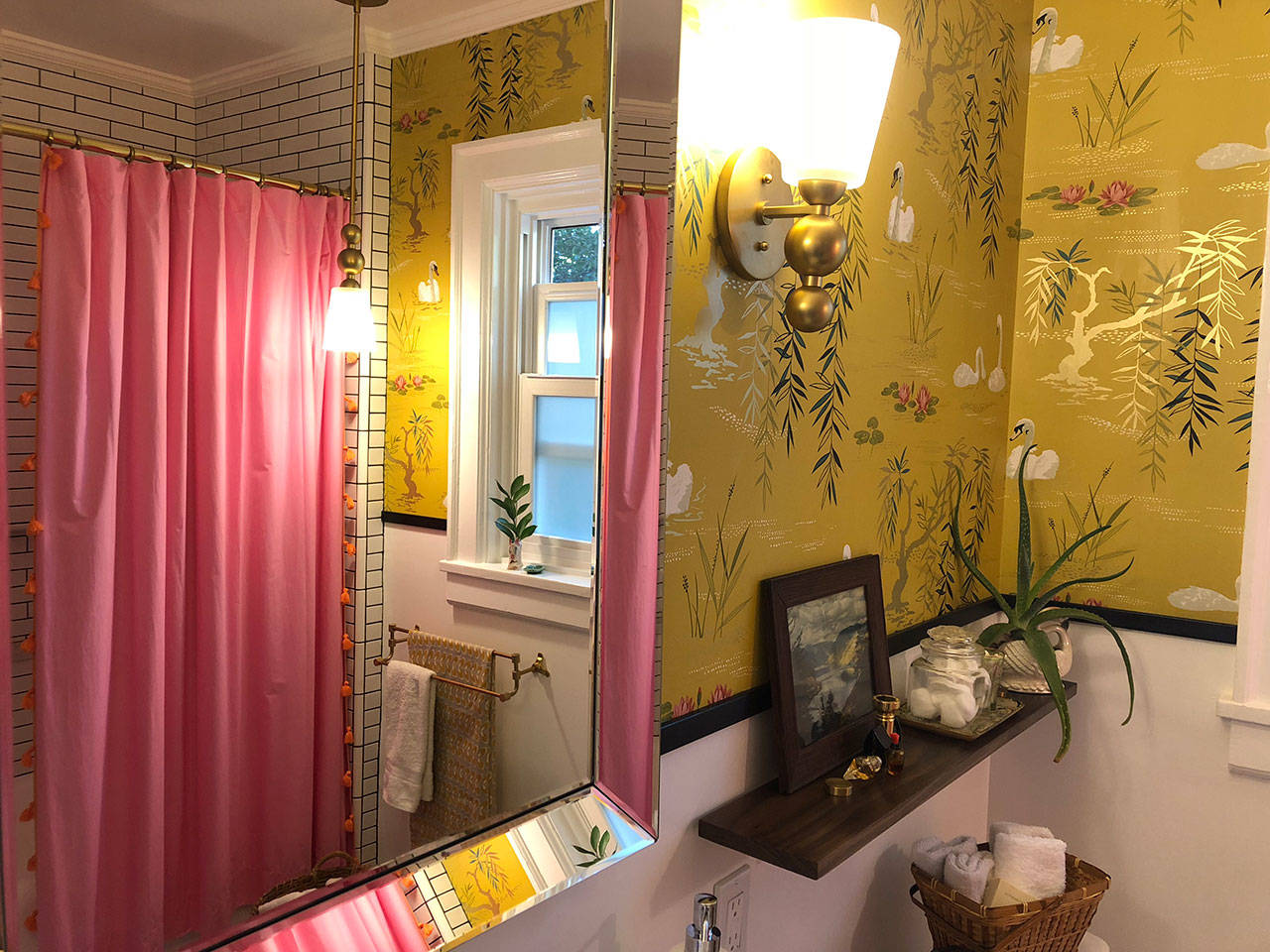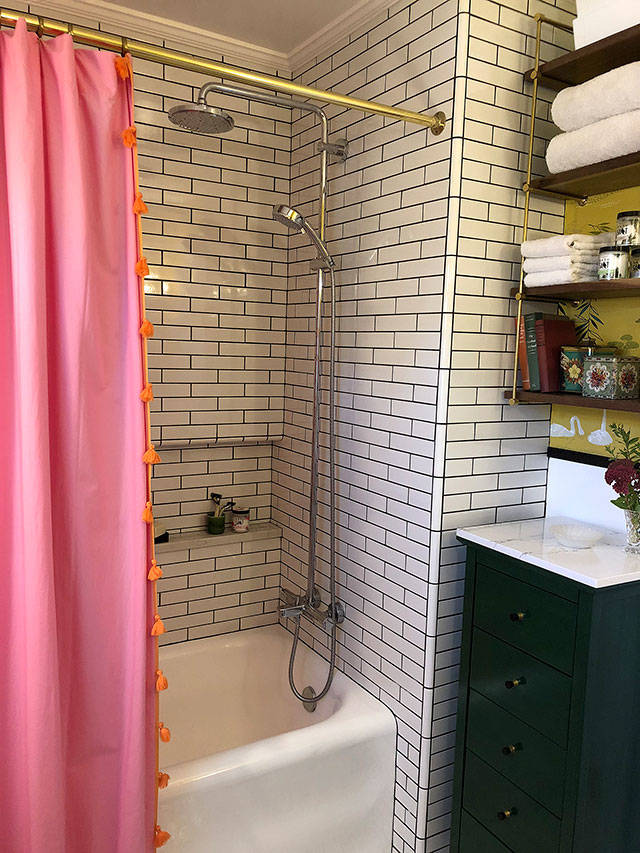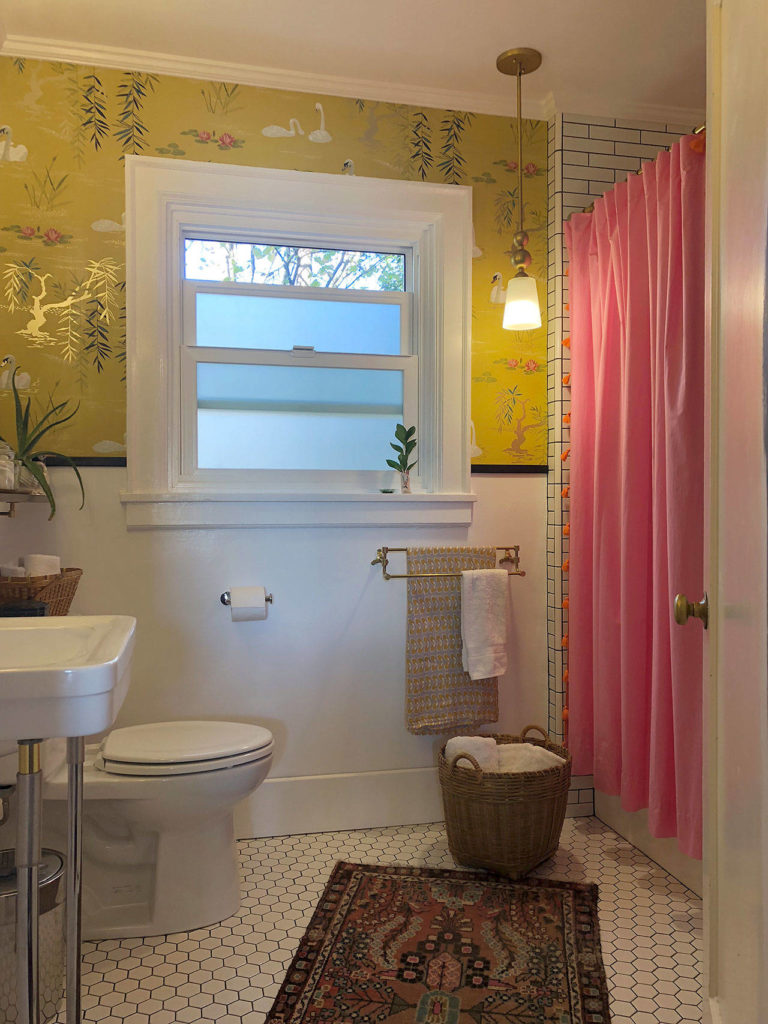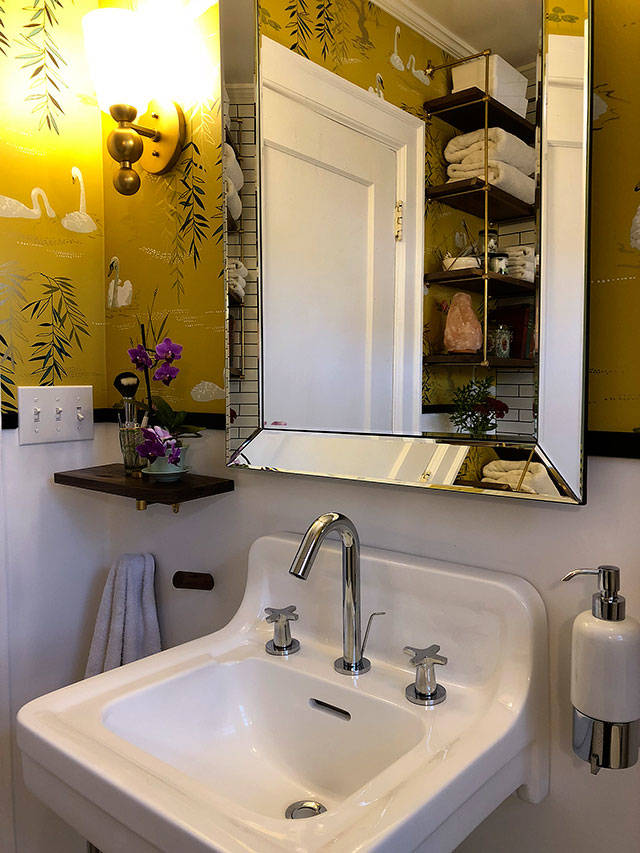The teenagers are coming.
That was my first thought when my wife and I discussed possible solutions for our dark, dingy and small main bathroom. We bought our 1925-era home about five years ago and knew that at some point we were going to have to tackle a renovation of the bathroom.
Its problems were many: the bathtub was nice and big, but it was smashed to one side, causing the door to bang into it every time you opened it more than halfway. There were no outlets. No vented fan. The lighting was one single overhead fixture that reminded me of a prison interrogation room. The paint was starting to mildew and flake everywhere.
In short, it was a nightmare.
To be fair, it was solid bathroom for little kids. Small and intimate, bath time was quick and painless and tiny squirrely kids were always within a towel’s grasp. Also, they couldn’t stick Q-tips into outlets and never complained about having to shimmy sideways between the sink and the tub to get to the toilet. Plus, they couldn’t make it any messier.
But as children are wont to do, they grow into smelly and dirty teenagers. We have three future adolescents on our hands, including a girl who will undoubtedly make the bathroom her second home. A full remodel of the bathroom was a must.
Over 14 weeks this past spring (it was supposed to be eight, but I digress …), we turned a bathroom befit a pauper into a proper posh powder room fit for a princess. We knocked out walls, properly electrified, vented and lit the entire room and tiled the entire bath and shower from floor to ceiling — and then some. (That goosed the budget a bit.)
Experts advise when remodeling a home for value appreciation to focus on the kitchen and then the bath. We did the kitchen two years ago and did much of it ourselves. The bathroom, though, was farmed out to multiple contractors. I don’t do wall replacement, plumbing or that much tile.
Like all major home renovations, it took longer and cost more than we thought. The end result, though, is breathtaking. The tile and wallpaper is beautiful, the added outlets and light are efficient and the extra room is luxurious. Overall, I couldn’t be happier.
But as with any project, the end result isn’t an accident. My wife was the de facto project manager, juggling more than a half-dozen contractors’ schedules and procuring 75 percent of the materials through hours of online sleuthing. She worked the remodel like a full-time job. (Not counting the time she was forced from the house due to noise and fumes.)
We learned a number of lessons from the ordeal … er, journey that could help anyone thinking of tackling a similar project. Here’s a few:
Be clear with your of direction. We chose one contractor to oversee the project and trusted him to farm out some of the jobs while we had friends do others. Before meeting with the contractor, though, we talked over plans and had a general idea of our final goal. My wife, an artist, loves to jot out sketches of the preliminary stages and final product. It helped tremendously to have the actual vision drawn out in physical form to see before anything was even demo’d.
Of course, sometimes those drawings get scrapped. The contractor we hired suggested we knock out a wall and add some space. It was a great idea and made all the difference. Though the original sketches had to be expanded, it was much easier to plan on the fly because of the rough draft we’d already created.
Be your own advocate. Whether you have one contractor working your job or multiple, it’s important to remember you alone are in charge of what the final product will look like. My wife had a vision. She did the research and knew the type of grout, tile and fixtures she wanted.
But there were a few times she had to fight for what she wanted. One contractor didn’t agree with the dark grout she picked. Another thought her choice of re-finishing the old sink was a mistake. In the end, she stuck to her guns and got what she wanted. If the contractors had just asked me, I would have told them it was hopeless arguing with her.
The point is, it would have been easy for her to demur and go with what was easier for the contractor. But because of solid planning, she knew what could and could not be compromised.
Be patient and flexible. Though it’s important to be uncompromising in some key components, it’s also crucial to be patient when hiccups arise. This often refers to added time and ballooning budgets, but there are many questions you’ll have to answer as the project unspools, and it’s important to compromise on the few that don’t really matter.
We had envisioned a bonus outlet and a dirty clothes chute on one of the walls. But due to complications on the other side of the wall, we had to scrap both. Instead we tiled the wall and made it a showpiece. We also decided against radiant heat in the floor because of logistics and took our contractor’s recommendation to add a pendant light, illuminating more of the larger bathroom.
One other thing: Contractors right now are very busy. The economy is riding high, and it seems just about everyone is doing some sort of remodel. That means contractors might not call you right back or get there when they say they will. Be persistent, but also be patient. Trust the old maxim: If you hired a busy contractor, it means he’s good.
Be open to reusing old furnishings. We love our long, deep cast-iron tub. It was in fairly rough shape, though, and it probably would have made sense to scrap it and bring in a new tub. But my wife loves to stretch out in a luxurious bath, so it was staying. We also picked up an old porcelain sink at a scrap yard that that had been around the block a few times.
To make it work, my wife looked up a guy who refinishes tubs and sinks. He moved the tub out and took the sink and returned them a few weeks later in pristine condition. We could have probably saved some money buying new, but the sink and the tub give the bathroom a vintage vibe that goes with the era of the home. It was a little extra work and a few extra dollars, but it was the right call.
Be an active online shopper. My wife is the master of the online deal. She’ll hunt and peck her way to the best deal she can find, even if it takes her half the day. Those skills came in handy on our bathroom remodel. She used Amazon Warehouse deals liberally, buying both plumbing fixtures at a fraction of the cost of new. One negative of Amazon Warehouse: You may at times find the wrong product or a damaged product in the box on your doorstep. We did a few times. Thankfully it’s easy to return.
Again, patience is key.
Being a good online shopper doesn’t always mean finding cheaper items. One aspect of our new bathroom is all of the copper fixtures throughout, from the shelf brackets to the towel racks. My wife discovered a woman on the East Coast who specializes in handmade copper wares. She was able to order nearly all of the wall-mounting fixtures (besides lighting) from her and keep a uniform look throughout.
Be prepared for things to go wrong. This is a no-brainer, but it bares repeating. Things are going to go wrong. The project is going to feel like “The Neverending Story.” Contractors are going to no-show. Refinished tubs are going to chip. Pipes will break. Brackets won’t fit. Paint will be spilled. There will be blood.
I lost count of the number of times my wife called while I was at work and started our conversation with, “There’s a bit of a problem …” It became a joke: I just started answering her phone calls with, “How much longer?”
When problems arise, it’s best to just roll with it. Find the solution. Compromise where you must and hold fast when it’s important. Some advice I got from a co-worker went a long way in helping dull the pain. In two months, he said, it’ll be over, you’ll have a brand-new bathroom, and you’ll have forgotten all about the little issues.
Looking back, he was right. Even if it was closer to four months.
Talk to us
> Give us your news tips.
> Send us a letter to the editor.
> More Herald contact information.




























